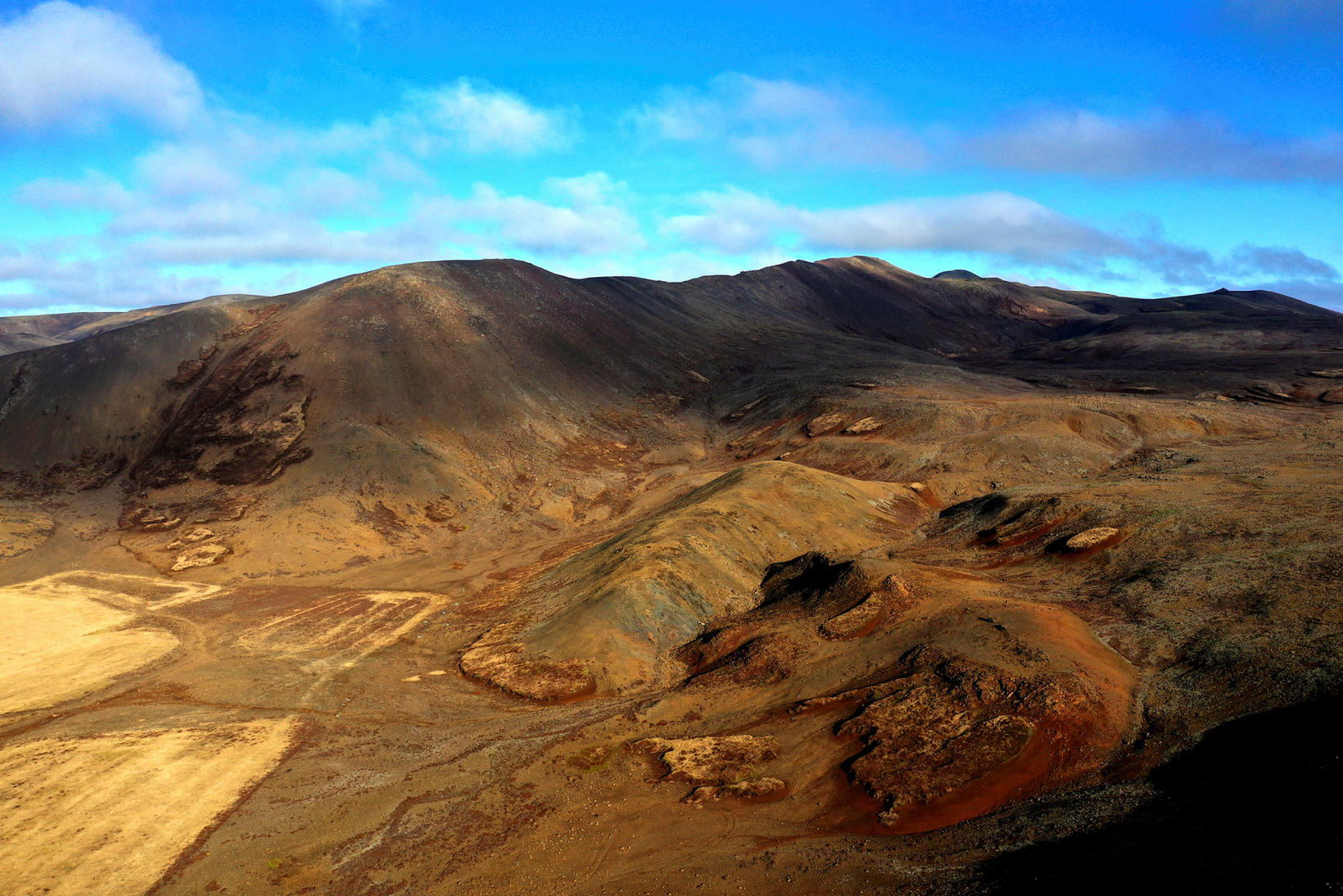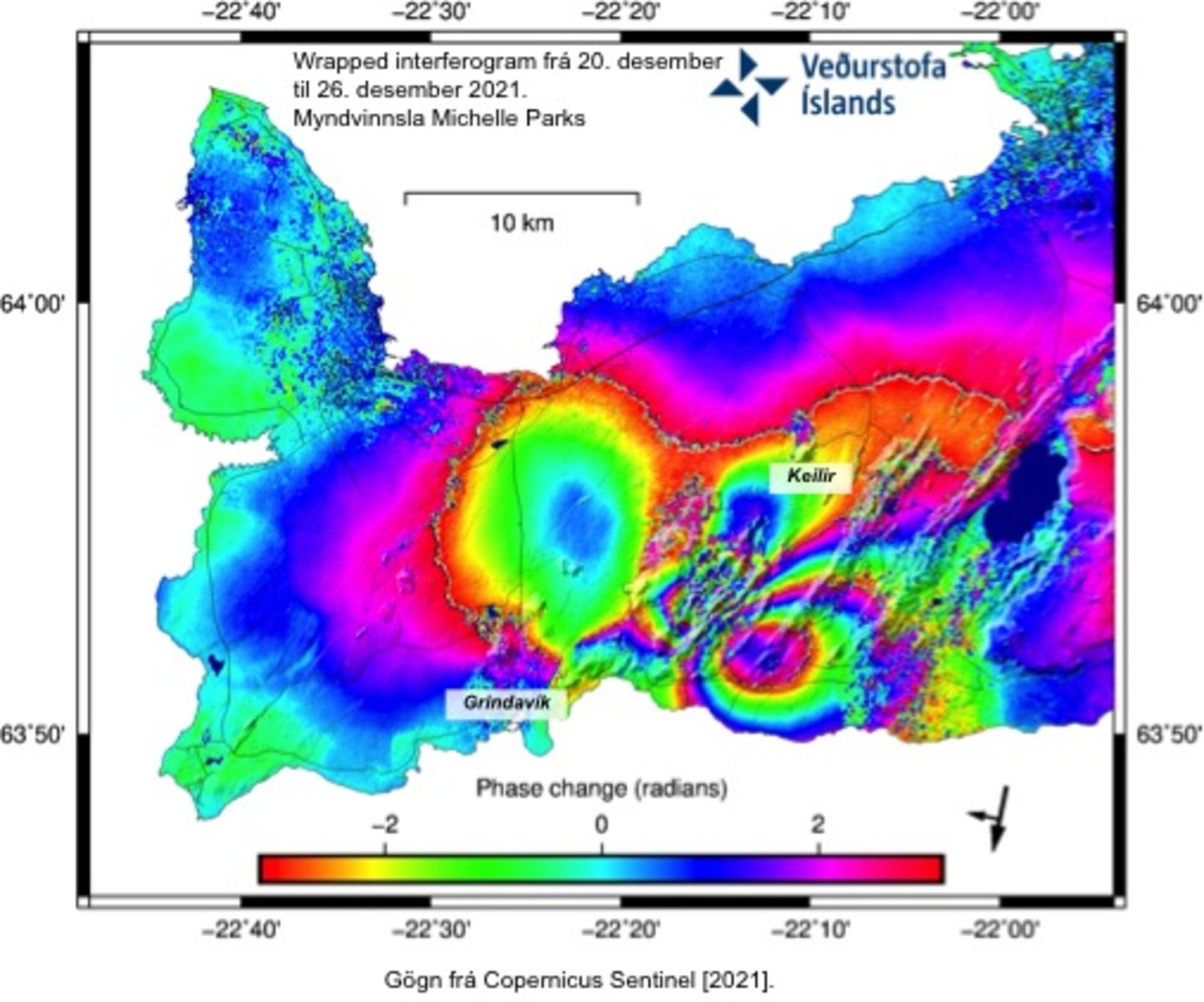About 3,000 Tremors a Day
Seismic activity on the Reykjanes peninsula, Southwest Iceland, continues. Since it began on December 21, about 15,000 tremors have registered, Morgunblaðið reports. The earthquakes were widely felt in the southwest corner of the country over Christmas. About 3,400 tremors registered on Christmas Eve and on Christmas Day, some of them of magnitude 4 or more. Yesterday, two so-called triggered earthquakes, of magnitude 3.6 and 3.9, hit a few kilometers north of Krýsuvík.
“[The triggered earthquakes] did not hit precisely where the magma dike is located, but when the magma dike expands, earthquakes hit elsewhere, due to change in tension,” explains Einar Bessi Gestsson, natural hazards specialist at the Icelandic Met Office. “There are no signs of magma collecting [where they hit].”
InSAR satellite pictures, taken December 20.-26, reveal deformation of the surface. Map/Icelandic Met Office
Einar states that the largest earthquakes of the seismic swarm preceding the Fagradalsfjall eruption that began March 19 were in excess of magnitude 5.
“We know we could get larger earthquakes than the ones we’re having now,” he states and adds that only 16 out of the 15,000 tremors have exceeded 4 in magnitude.
On Christmas Day, a temporary tremor pulse was detected by Fagradalsfjall mountain — the most obvious one during this swarm of earthquakes, Einar states.
“We saw this, too, prior to the eruption in March,” he explains. “The seismic activity increases temporarily, which is thought to possibly indicate that magma is succeeding in breaking a path under the surface, or that it’s moving about.”
He states it is impossible to tell whether an eruption is imminent, but adds that the seismic activity and the deformation that has registered suggest that magma is moving underneath the surface. Whether it will reach the surface is impossible to predict.
“I’d say that the longer the seismic activity and deformation last, the greater the chance of a volcanic eruption,” he states.
It is hard to tell for how long the seismic activity is likely to last. Prior to the eruption in March, it lasted about four weeks.
Einar adds that should an eruption occur, it is still unclear whether that should be defined as a continuation of the eruption that ended September 18, or a new one. It will depend on the location of the vent. “In my mind, this is all part of a sequence of events,” he concludes.









